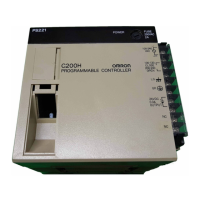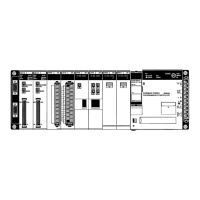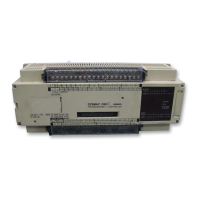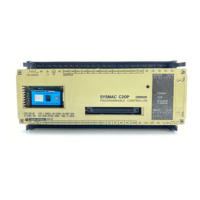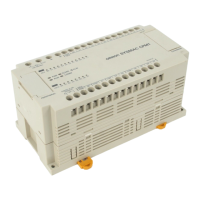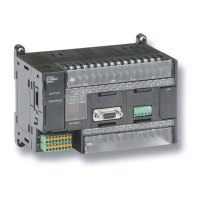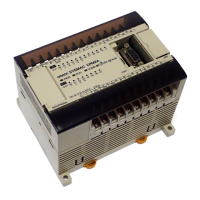Glossary
40
building-block PC A PC that is constructed from individual components, or“ building blocks.”
With building- block PCs, there is no one Unit that is independently identifi-
able as a PC. The PC is rather a functional assembly of components.
carry flag A flag that is used with arithmetic operations to hold a carry from an addition
or multiplication operation, or to indicate that the result is negative in a sub-
traction operation. The carry flag is also used with certain types of shift oper-
ations.
central processing unit A device that is capable of storing a program and data, and executing the set
of instructions contained in the program. In a PC System, the central pro-
cessing unit executes the program, processes I/O signals, communicates
with external devices, etc.
channel See “word”
control bit A bit in a memory area that is set either through the program or via a Pro-
gramming Device to achieve a specific purpose, e.g., a Result bit is turned
ON and OFF to restart a Unit.
counter A PC function that counts the number of occurrences of a certain event.
CPU An acronym for central processing unit.
CPU Backplane A Backplane used to create a CPU Rack.
CPU Rack Part of a Rack PC, the CPU Rack contains the CPU, a Power Supply, and
other Units.
data area An area in the PC’s memory that is designed to hold a specific type of data,
e.g., the LR area is designed to hold common data in a PC Link System.
Memory areas that hold programs are not considered data areas.
data area boundary The highest address available in a data area. When designating an operand
that requires multiple words, it is necessary that the highest address in the
data area is not exceeded.
default condition The original condition of a function or system. For example, the FIT’s default
condition is to start from its hard drive, but this default condition can be
changed so that it starts from a floppy disk drive.
digit A unit of storage in memory that consists of four bits.
DM area A data area used to hold word data. A word in the DM area cannot be ac-
cessed bit by bit.
EEPROM [E(lectrically) E(rasable) P(rogrammable) R(ead) O(nly) M(emory)] A type of
ROM in which stored data can be erased and reprogrammed. This is accom-
plished using a special control lead connected to the EEPROM chip and can
be done without having to remove the EEPROM chip from the device in
which it is mounted.
EPROM [E(rasable) P(rogrammable) R(ead) O(nly) M(emory)] A type of ROM in
which stored data can be erased, by ultraviolet light or other means, and re-
programmed.
